Magic in the air
Orlando was a very different place when Mickey’s Toontown Fair opened. Universal Studios Florida was the park’s closest contender, and its Woody Woodpecker’s Kidzone is roughly equivalent to Toontown Fair in terms of scale and scope. But a decade later, things had changed.
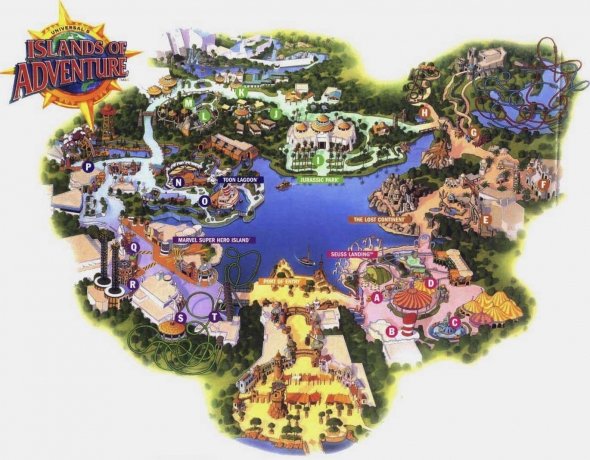
In 1999, Universal’s Islands of Adventure signaled what the next era of theme parks would look like. Alongside Disney’s own Animal Kingdom, it was clear that the next generation of headlining destination parks would look very different from the stark, barren, studio-style “backlots” and the simple, pastel, cartoon motifs of the ’90s. Thanks to Universal’s staggering new lands like Port of Entry, Seuss Landing, Jurassic Park, Marvel Super Hero Island, and the Lost Legend: The Lost Continent, a new cinematic era of themed entertainment design arose, requiring immersive environments and embedded detail as never before.
In 2010, Universal bested themselves with the opening of the Wizarding World of Harry Potter – Hogsmeade, a completely immersive, brick-for-brick, to-scale recreation of the Scottish village from the Harry Potter film series including the towering Hogwarts castle reining over it all.

More than stepping onto a set or even experiencing an E-Ticket attraction, the Wizarding World invited guests into a world, including all the food, drink, and merchandise that comes with it. Though Disney publicly congratulated Universal on the opening of the Wizarding World, insiders suggested that the land’s opening activated Walt Disney World in a way it hadn’t been for years…
At once, dirt starting moving at Disney parks as they borrowed from Potter’s formula en route to Cars Land, Star Wars lands, Pandora: The World of AVATAR, Marvel super hero lands, Frozen lands… But their first to get off the ground would spell the end of Mickey’s Toontown Fair…
New Fantasyland – Take 1

In 2009 – just as Universal put the finishing touches on their Wizarding World – Disney made an unexpected announcement: after nearly four decades of their Fantasyland retaining a simple, Medieval faire, tournament tent style (which Disneyland had done away with in the ‘80s in favor of a European storybook village overlay), Magic Kingdom’s Fantasyland would finally receive a facelift of its own, making use of the space vacated a decade before by the closure of the park’s Lost Legend: 20,000 Leagues.
Nicknamed Fantasy Forest, the land would borrow from the new formula of immersive, cinematic styling exemplified by Universal’s Islands of Adventure. It would be an enchanted realm that allowed guests to step into their favorite Disney films; to eat, drink, and shop where characters from Beauty and the Beast might; to walk along the seaside hills of Eric’s castle from The Little Mermaid; to step into the oversized world of Pixie Hollow to meet Tinker-Bell and her fairy friends from Disney’s Fairies franchise.
But wait… there was a problem. As fans eagerly studied the artwork that Disney had released of the ambitious expansion, they quickly noticed that the land’s demographic was slightly skewed… Consider the attractions Disney had planned for this growth spurt:

- A meet-and-greet / elaborate walkthrough attraction with Belle from Beauty and the Beast inside her father’s cottage (with the accompanying Be Our Guest restaurant)
- A meet-and-greet with Ariel from The Little Mermaid
- A meet-and-greet with Cinderella inside her stepmother’s Chateau
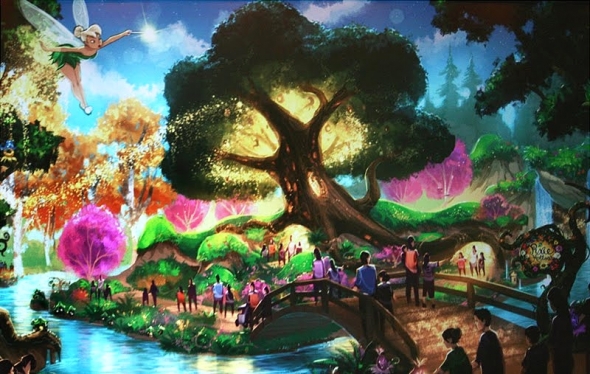
- A meet-and-greet with Tinker Bell inside an elaborate Pixie Hollow area borrowed from Disneyland, replacing most of Mickey’s Toontown Fair
- A meet-and-greet with Snow White and Aurora in their own dedicated cottages
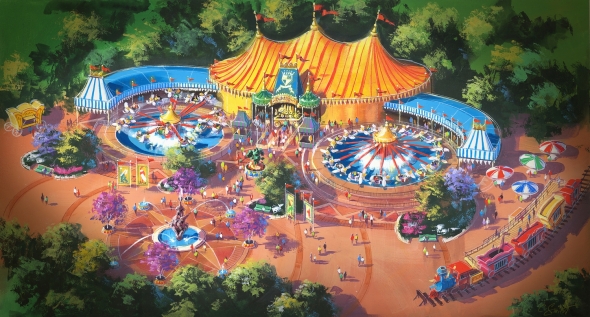
- A relocated and expanded Dumbo the Flying Elephant
- A new dark ride based on The Little Mermaid, duplicated from the under-construction one at Disney California Adventure
To fans’ count, this brand-new, much-anticipated expansion – touted as “the largest expansion in Magic Kingdom’s history” – amount to six elaborate Disney Princess meet-and-greets… and a net one new ride. The entirety of Mickey’s Toontown Fair would be bulldozed to make way for Pixie Hollow, salvaging only the county-fair-themed Barnstormer and a relocated Dumbo to create a mini-circus area.
Fans were quick to push back against the expansion, countering that if this was meant to be Disney’s answer to the Wizarding World – the must-see expansion to lure guests back from Universal – they would need to try harder. And surprisingly… they did.
Finalizing Fantasyland
Two years after the announcement of New Fantasyland, Imagineers returned to the semi-annual D23 Expo to announce the expansion again, but with a few key edits… While immersive themed areas dedicated to Beauty and the Beast and The Little Mermaid remained, the rest of the land had evolved.
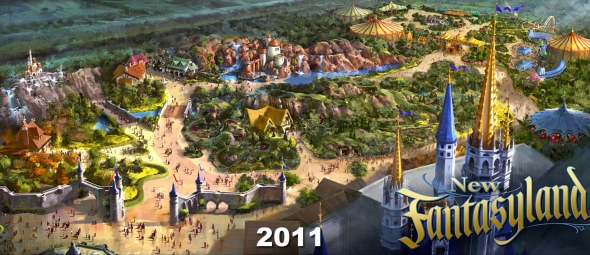
The forested “island” of meet-and-greets in the center of the land had been scrapped and replaced with the Seven Dwarfs Mine Train – a swinging, slaloming ride through the Dwarves’ gem-mines – half family coaster, half dark ride. (Albeit, that forced the closure of Fantasyland’s Lost Legend: Snow White’s Scary Adventures so that the former dark ride space could be used as an all-in-one Princess Fairytale Hall meet-and-greet).
As for Disney’s plans to raze Mickey’s Toontown Fair in favor of Pixie Hollow? The updated artwork for New Fantasyland confirmed that the circus tents of Toontown Fair would now remain… but the standalone land would not.

Mickey’s Toontown Fair closed forever on February 12, 2011. It was absorbed into Fantasyland, becoming another “neighborhood” within, stylized as if a turn-of-the-century circus had come to town. Lovingly re-crafted, the land’s cartoon facades and structures fell. The tents were re-shaped with vintage colors and patterns, becoming meet-and-greets with Mickey’s friends in their classic circus apparel.
The tent-arched train station became the redbrick Carolwood Park Fantasyland Station, giving it a sense of time and place – a small town depot in the age of the steam train, decked out in detail and storytelling.
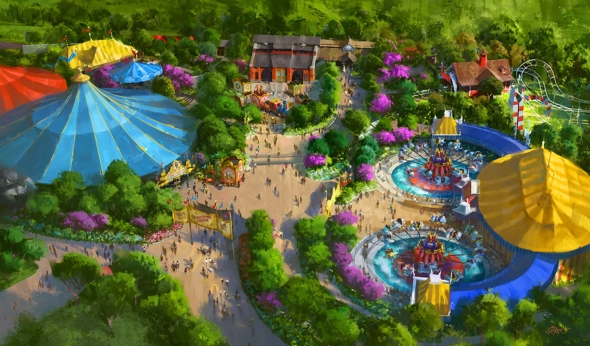
Goofy’s Barnstormer was redressed as well, replacing the plastic cartoon queue through Goofy’s farm with a circus daredevil ace theme featuring The Great Goofini – a seeming call-out to early Goofy animated shorts. The relocated and expanded Dumbo (with a prototype circus-playground queue) adds to the story of the area, as do references to Casey Junior and other classic Dumbo characters.
Fairer fortunes
Roger Rabbit may never have gotten his ride at Walt Disney World, and the Toontown Fair his story (indirectly) inspired didn’t last very long, either. The good news is that the story of Toontown Fair and its eventual elimination fold nicely in the category of Disney Parks tales wherein, in retrospect, the right thing happened. While it would’ve been a sincere and lasting shame to loose Toontown Fair to a stagnant Pixie Hollow meet-and-greet, its re-use as Storybook Circus is an improvement over Toontown Fair in most all regards.
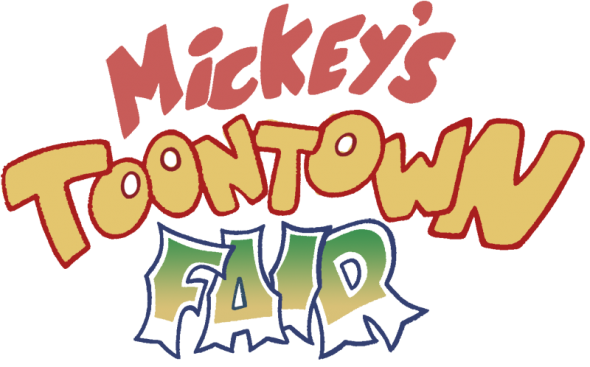
But that doesn’t stop the lost land from being a source of wonderful memories for Disney Parks guests. While it lacked the permanence and detail Disney is supposed to be known for, Mickey’s Toontown Fair was a thoughtful, clever re-use of Mickey’s Birthdayland, and a thrifty adaptation of a land that could’ve simply been closed decades ago as planned.
In its closure, the pieces of Mickey’s Toontown Fair that most mattered have all survived, and typically in much-improved form. As the Storybook Circus, the ingredients that made up the micro-land have been given the timelessness and realism they needed, even if it leaves Magic Kingdom without a pastel cartoon wonderland for kids.
The only true downside? Now when kids ask, “Where does Mickey Mouse live?” the answer will be, “He has houses in California and Tokyo.”

Thank you so much for reading. Now, it’s your turn to join the story. If you enjoy spending time falling down the “rabbit hole” of Park Lore’s in-depth, ad-free, member-supported stories, consider becoming a Member for as little as $2 / month.
Members can unlock rare concept art in every tale, reveal attraction audio streams in select stories, gain access to over a hundred exclusive articles in our quick-read Extra Features and in-depth Special Features collections, gain exclusive podcast extras, and receive an annual member card and merch in the mail! (Plus, y’know, supporting research-based, ad-free, clickbait-free, in-depth theme park writing!)
If you’re the kind of Disney Parks fan who enjoys studying the history of lost attractions, be sure to make the jump to our Lost Legends collection, where you can set course for your favorite forgotten attractions of yesteryear. Then, use the comments below to share your memories of Mickey’s Toontown Fair. Was it taken too soon? Or is Storybook Circus an improvement over this land that was never really meant to last?


